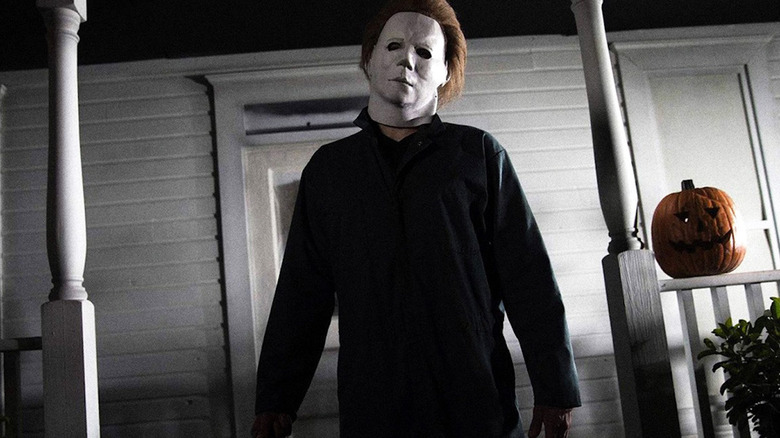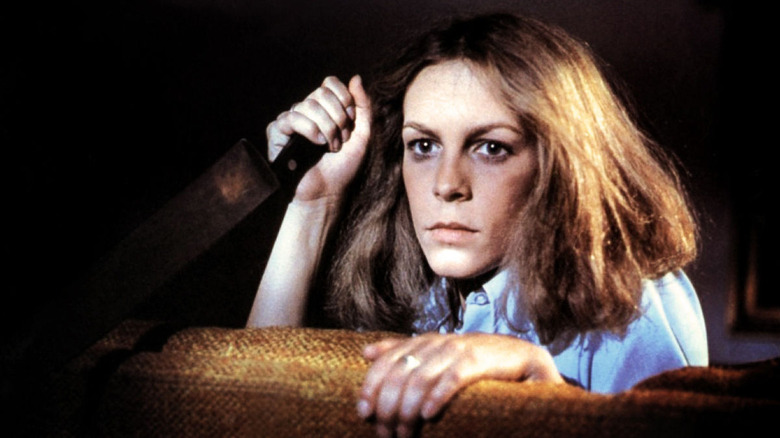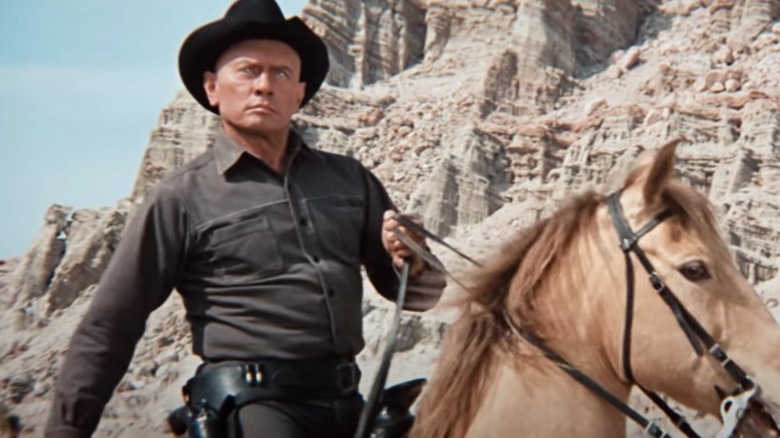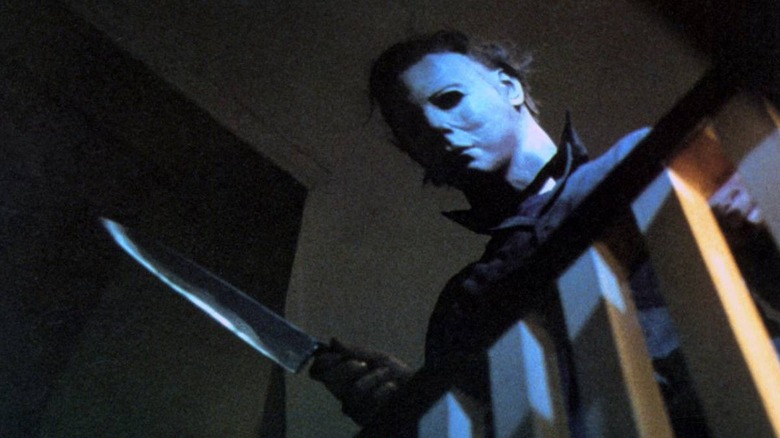Some Of John Carpenter's Inspiration For Michael Myers' Character Came From A Sci-Fi Classic
As the old saying goes, "success has many fathers, failure is an orphan." John Carpenter's 1978 classic, "Halloween," is the very definition of a successful film: it made so much money that it held the record for the highest-grossing independent movie of all time for numerous years, and it became so influential that it not only kickstarted a boom of horror movies in the late '70s and early '80s, but solidified the subgenre known as the slasher film, creating a template that other successful movies like "Friday the 13th" and "Scream" utilized and riffed on.
All this success means that a number of folks over the decades have attempted to precisely define what made "Halloween" so special. Of course, like any work of art, "Halloween" was not cut from whole cloth, drawing as it did upon the storied history of other horror movies and media in general for inspiration. So to say "Halloween," its plot structure of a handful of babysitters being stalked and slaughtered by a killer who escapes from a mental asylum, or the silent, masked character of Michael Myers was inspired or influenced by one particular prior work is inaccurate.
That being said, there are a few antecedents to "Halloween" that, in retrospect, clearly paved the way for Carpenter and co-writer/producer Debra Hill bringing Michael Myers to life. One of these influential films is, surprisingly, not a horror movie at all, but rather writer Michael Crichton's feature directorial debut: 1973's "Westworld."
Carpenter turns to horror when Westerns don't work out
Most fans of John Carpenter know of his long-held love for the Western genre, especially the films of John Ford and Howard Hawks. So it's no surprise that Westerns were what the filmmaker hoped to tackle when he first began his career. However, given the fact that the genre was experiencing a low ebb during the '70s, Carpenter couldn't get a Western made. Thus was born his second feature film, "Assault on Precinct 13," which was a modern, urban riff on Hawks' Old West-set "Rio Bravo" from 1959.
As Carpenter told Interview magazine back in 2015, "Horror found me, man. I got into the movie business to make Westerns ... but there were no Westerns anymore. They'd already died out as a genre, so I made 'Halloween' and everyone came running because it made money." To be sure, Carpenter also said "I was a big fan of horror movies when I was a kid," so it's not like the horror genre was alien to him. Yet one can look at Carpenter's filmography through a Western lens, even such nakedly supernatural movies like "They Live" and "Vampires," and see the influence the genre had on them.
A sci-fi western becomes an inspiration for Michael Myers
"Halloween" is such a quintessential horror movie that it can be difficult to see the Western influence within it. Until, that is, one sees "Westworld," after which the parallels become clear.
In "Westworld," Crichton takes the basic idea for what would eventually become "Jurassic Park" for a test-run, depicting a futuristic amusement park-cum-luxury resort where human beings can interact with lifelike androids in one of three different historical environments: Medieval Europe, Ancient Rome, and the Wild West. When a malfunction begins to spread among the androids like a computer virus, the robots turn on the guests and staff, and the protagonist, Peter (Richard Benjamin) is the Final Boy who must survive and defeat the android Gunslinger (Yul Brynner).
As Carpenter observed in his discussion with Interview, "the main influence [for Myers] was 'Westworld,' which had a robot gunfighter. He kept coming back. He wouldn't stop." While Crichton's movie is far more interested in the social, historical, and technological commentary surrounding the film's concept, the final act plays out remarkably like a horror movie, with Peter struggling to stop the Gunslinger's pursuit much like Laurie Strode (Jamie Lee Curtis) tries to stop Michael in "Halloween." Where the Gunslinger's seemingly unkillable nature makes logical sense since he's a robot, Carpenter's stroke of genius in transferring that ability to a character who is ostensibly supposed to be human helped make Michael Myers terrifying, and "Halloween" a raging success.
The path to Michael Myers is long and winding
Of course, the Gunslinger's relentlessness and seeming immortality were not the only inspirations for the Shape that is Michael Myers. For one thing, Carpenter was quick to point out that Myers came from a few different sources:
"'Halloween' was an assignment. Some killer stalking babysitters is all it was. I created that character and named him after the distributor in London who had released 'Assault on Precinct 13.' His name was Michael Myers and he was one of the nicest men in show business. I took away his character and made him an evil force."
Carpenter was partially inspired to "take away his character" by an experience he'd had in college, when he was taking a course in psychology and visited a mental institution on a field trip for the class one day. As he described in a documentary called "Halloween: A Cut Above the Rest," the visit to that institution and in particular the eerie stare of a young boy who was interned there made a huge impression on the young filmmaker.
Of course, "Halloween" famously borrowed — either consciously or not — from prior films that paved the way to the slasher subgenre, from Alfred Hitchcock's "Psycho" to Mario Bava's "A Bay of Blood" to Bob Clark's "Black Christmas." It's arguable that the movie received and retained such power to scare, disturb, and delight for the last 40-plus years precisely because it is such a well-made stew, a confluence of influences that keeps the film — and Michael Myers — so compelling.



